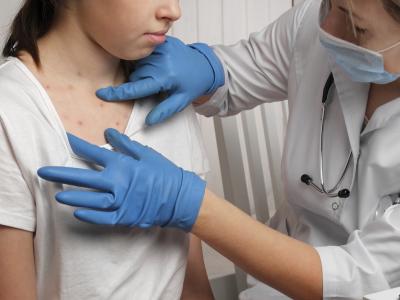VHA hospital study shows benefits of carbapenem-specific stewardship
An assessment of 90 Veterans Health Administration (VHA) hospitals found that carbapenem-specific stewardship strategies were associated with a lower volume of carbapenem use and more appropriate carbapenem prescribing, researchers reported yesterday in the Journal of Antimicrobial Chemotherapy.
In the study, researchers from the University of Iowa Carver College of Medicine and the Iowa City Veterans Affairs Health Care System analyzed all acute care admissions at VHA hospitals in 2016 and used a national VHA survey to categorize each hospital's carbapenem-specific antibiotic stewardship strategy into one of three types: no strategy (NS), prospective audit and feedback (PAF), and restrictive policies (RP).
They then calculated overall carbapenem use and days of therapy (DOT) per 1,000 days present and compared strategy effectiveness using risk-adjusted generalized estimating questions that accounted for clustering within hospitals. Auditors assessed carbapenem appropriateness with an assessment score on day 4 of therapy.
Overall, there were 429,062 patient admissions across 90 hospitals in 2016, and at least one inpatient carbapenem dose was administered during 8,566 patient admissions (20.0%). Median carbapenem use across hospitals was 17.4 DOT/1,000 days present. In the adjusted analysis, carbapenem use was lower at PAF than NS sites (rate ratio [RR], 0.6; 95% confidence interval [CI], 0.4 to 0.9) but similar between RP and NS sites (RR, 0.8; 95% CI, 0.5 to 0.12).
Carbapenem prescribing was considered appropriate in 215 (50.6%) of the reviewed cases. Assessment scores were significantly lower (ie, better) in hospitals with an RP strategy compared with NS hospitals (mean 2.3 versus 2.7) but did not differ significantly between PAF and NS sites (mean 2.5 vs 2.7). Across all three strategies, infectious disease (ID) consultations—which were more common at PAF/RP than NS sites—were associated with better assessment scores.
The authors concluded that antibiotic stewardship strategies and ID consultations appear to be complementary and that hospitals should leverage both to optimize carbapenem use.
Feb 1 J Antimicrob Chemother abstract
Antibiotic use declined during Spain's COVID-19 lockdown
Data from Andalusia, Spain, show antibiotic use in the community declined during the pandemic compared with the pre-COVID period, according to a study yesterday in Clinical Microbiology and Infection.
To assess the impact of the pandemic on community antibiotic use in a region with an existing antibiotic stewardship program (ASP) for hospitals and primary care clinics, a team of Spanish researchers conducted a before and after cross-sectional study comparing outpatient antibiotic prescribing in Andalusia in the first two quarters of 2019 and the same quarters in 2020, when a regional lockdown was in force. Data were collected from a pharmacy database containing records of reimbursed and dispensed drugs.
The analysis found that overall community antibiotic consumption in Andalusia fell by 7.6% between the first quarter of 2019 and the first quarter of 2020, and by 36.8% between the second quarters of 2019 and 2020. Larger reductions were found between the second quarters for most antibiotic classes studied as well as four antibiotics used for respiratory infections (amoxicillin, amoxicillin-clavulanate, cefuroxime, and levofloxacin).
The analysis also revealed a concomitant reduction in primary care consultations in the region.
The authors say the question is how much the reduction in community antibiotic use was linked to the lockdown, limited access to the healthcare system and antibiotic prescriptions, and how much can be attributed to Andalusia's ASP.
"Gaining access to that information may be useful to improve ASPs in primary care," they wrote. "If these results are confirmed in other health systems, further studies are needed to determine whether this reduction in antibiotic use in the community during the pandemic has resulted in a favourable ecological impact."
Feb 1 Clin Microbiol Infect study
H5N8 avian flu strikes poultry in Nepal, Europe, China
Nepal became the latest country to report highly pathogenic H5N8 avian flu in poultry, with more detections reported in France and Germany, according to the latest notifications from the World Organization for Animal Health (OIE).
Nepal reported an H5N8 outbreak in backyard poultry in Bagmati, which began on Jan 21, killing 32 of 2,576 birds. The event marks the country's first appearance of the virus in poultry since 2019. Though the source of the outbreak isn't known, wild birds were seen in the area where the outbreak occurred.
Elsewhere in Asia, China reported H5N8 detections in wild swans in Beijing, according to the Global Times. The country recently reported an H5N8 outbreak involving mute swans in Shandong province.
In Europe, France reported 11 more H5N8 outbreaks, mostly in its hard-hit southwest. Of the five departments reporting recent outbreaks, only one, which involved backyard birds, is in the northeast: Ardennes. The latest outbreaks began from Jan 9 to Jan 28, and taken together, the virus killed 1,070 of 66,458 birds.
Elsewhere on the continent, Germany reported an H5N8 outbreak at a turkey farm in Mecklenburg-Vorpommern state, which began on Jan 28 killing 1,532 of 19,479 susceptible birds.
In outbreaks involving other highly pathogenic strains, Taiwan reported another H5N5 outbreak in poultry, which began on Jan 15 at a chicken farm in Pingtung County and killed 1,679 of 9,222 birds. Also, Romania reported H5N5 in two wild swans found dead on Jan 25 in Constanta County in the far southeast.
Jan 30 OIE report on H5N8 in Nepal
Feb 2 Global Times story
Feb 2 OIE report on H5N8 in France
Feb 1 OIE report on H5N8 in Germany
Feb 1 OIE report on H5N5 in Taiwan
Feb 2 OIE report on H5N5 in Romanian wild birds
In low-pathogenic avian flu developments, South Africa reported two more H7 outbreaks on commercial ostrich farms. The outbreaks began in early November at facilities in Western Cape province. Between the two events, the virus killed 9 of 194 susceptible birds.
Feb 1 OIE report on low-path H7 in South Africa













